Here in the Learning and Programmes team we have been working on the Get Energised project, a science, engineering and technology engagement programme for schools aimed at investigating Scotland’s future energy needs, focusing on renewable energy. As part of this project, which is funded by the ScottishPower Foundation, those of us delivering the programme were given the opportunity to visit Scottish engineering and renewable energy sites.
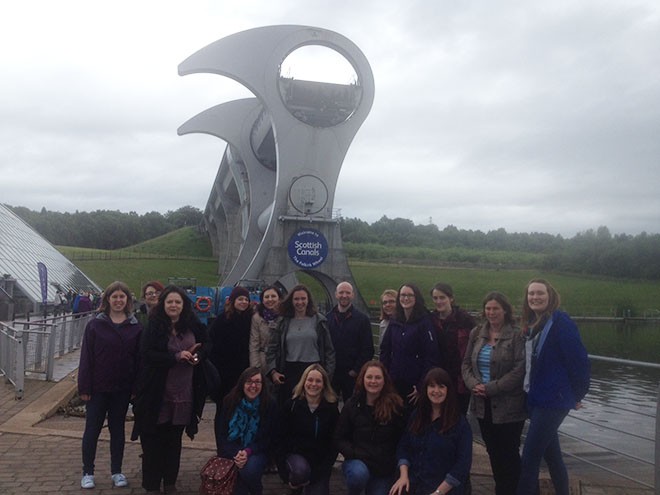
One rainy day in June we met at the only rotating boat lift in the world, the Falkirk Wheel, which was later described by our guide as the Eighth Wonder of the Engineering World. We were excited to find out more! The wheel was a result of some groundbreaking design and engineering aimed at linking the Union Canal with the Forth and Clyde Canal. The Falkirk Wheel replaces the original 11 locks that negotiated the 35m level difference between the two canals. This was a central part of the ‘Millennium Link’, a project that reinstated an east-west navigable route across Scotland.
We began our visit by taking a trip on the boat lift aboard a boat named Antonine – a nod to the fact that the tunnel linking the lift to the Union Canal was built underneath the remains of the Roman Antonine Wall.
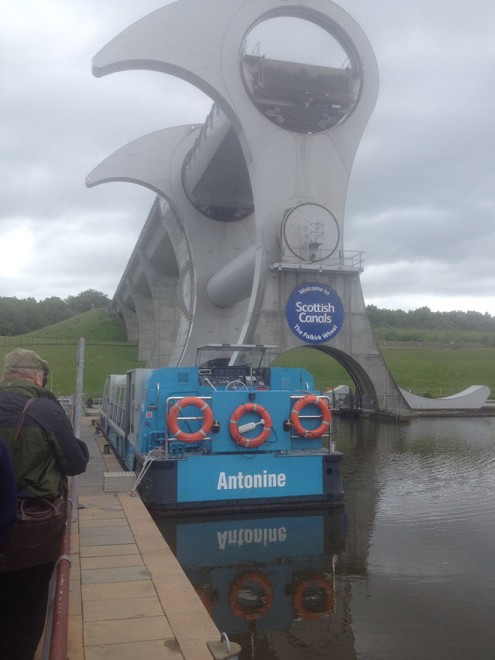
On board we were introduced to the physics behind the workings of the wheel. The wheel consists of two gondolas, one at the lower level and one at the upper level. We entered the lower gondola in our boat, displacing an equal mass of water. The gondola then lifted our boat, and the water it was floating in, up the 35 metres to meet the Union Canal above. At the same time as we were moving upward, an equal mass was being lowered in the other gondola. Because each of the gondolas is precisely balanced, a small amount of energy is needed to move boats from the upper and lower canals. It only uses 1.5Kw of energy to turn the wheel – that’s the same amount it would take to boil eight kettles!
This process works on the Archimedes principle of displacement that states: ‘any object, wholly or partially immersed in a fluid, is buoyed up by a force equal to the weight of the fluid displaced by the object’.
It took 5 ½ minutes for the lower gondola to rise the 35 metres to meet the Union Canal. We then took a trip through the Roughcastle tunnel, turned around and took the journey back down again, sharing a gondola with a family on board their holiday canal boat! This was a reminder that the wheel is not simply a one off engineering project, but also an important tourism draw for the Central Belt.
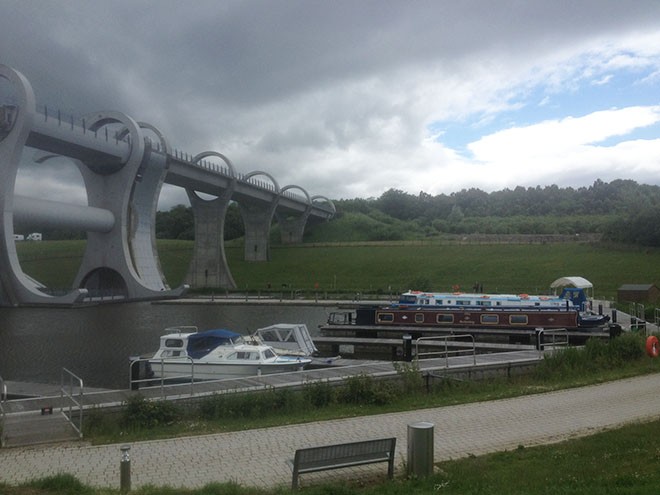
Once we were back on dry land we met with George McBurnie, a Civil Engineer and a project manager at Scottish Canals. George told us about some of the challenges faced in the planning stages of the project. We learnt about the varied jobs that go into maintaining the wheel and the canal systems, from engineers to environmentalists. George also revealed that one of the architects stumbled upon the three cog system central to the mechanism of the Wheel while playing with his son’s Lego!
We ended our visit exploring the water play park, intended for adults and children alike. We used the Archimedes screw to move water uphill and find out more about the principles of water movements and displacement. The group also explored a giant stone map of Scotland, complete with mini canals and working lock gates.
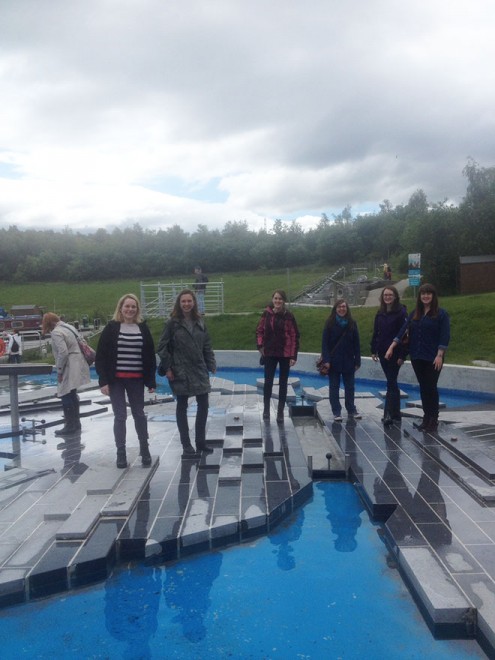
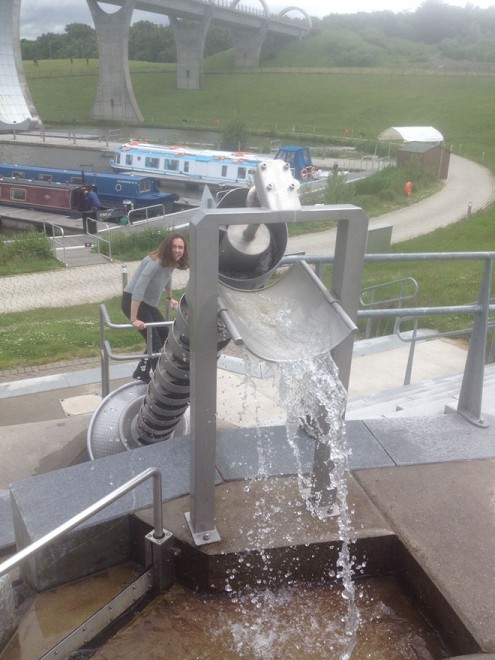
A fantastic day was had by the whole team and we came away having learned more about engineering principles at work in Scotland and looking forward to welcoming new schools to experience the Get Energised programme in 2015 -16.
We have just released details of our Get Energised programme for secondary schools in 2015-16 and you can find more information here.
Get Energised is made possible by the generous support of The ScottishPower Foundation.
